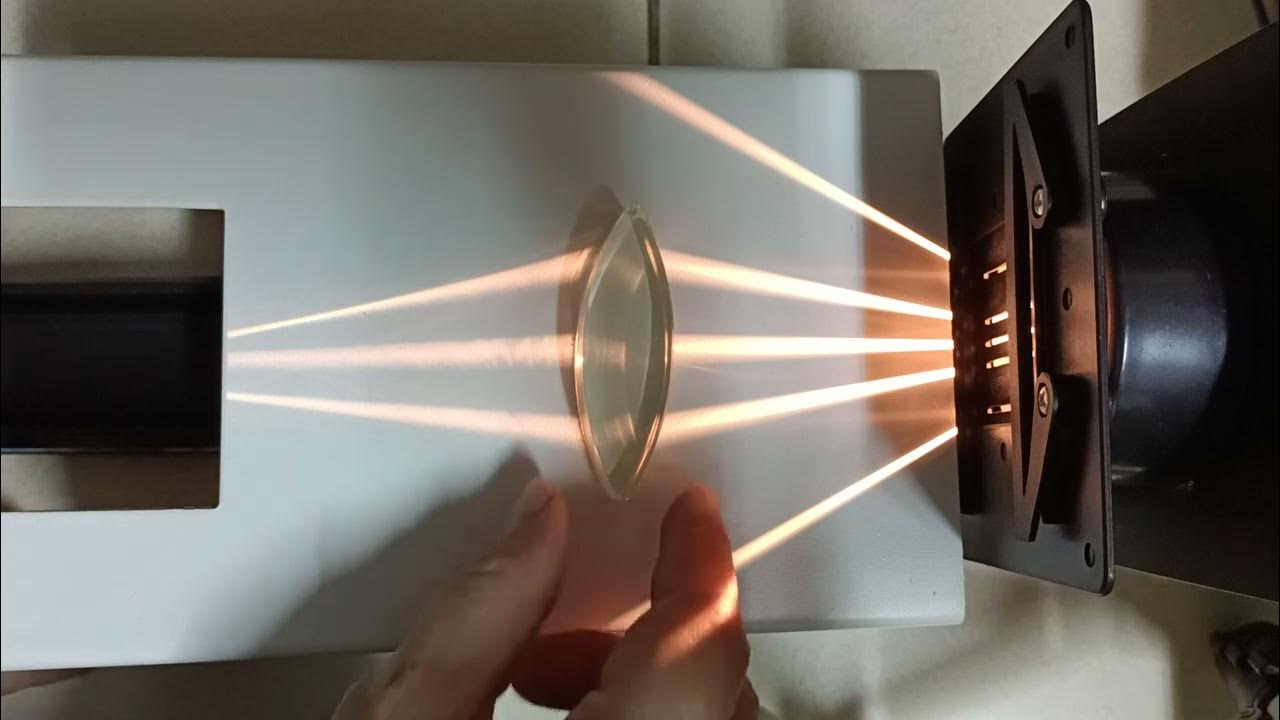Qualitative Characteristics (Orientation, Types, and Magnification) of Images Formed by Mirrors
Summary
TLDRIn this educational video, the principles of light reflection and refraction are explored through different types of mirrors. The script explains how light bounces off smooth surfaces (specular reflection) and rough surfaces (diffuse reflection), while delving into the characteristics of real and virtual images. It highlights how plane mirrors create laterally inverted images and how curved mirrors (concave and convex) form real and virtual images, with varying sizes and orientations. The video provides real-world examples, making complex optical concepts easily understandable for viewers.
Takeaways
- 😀 A mirror is a smooth reflecting surface, usually made of polished metal or glass, that reflects light to form images.
- 😀 Reflection of light is the bouncing back of light when it hits a reflective surface like a plane mirror.
- 😀 The angle of incidence is always equal to the angle of reflection, which is a fundamental law of reflection.
- 😀 There are two types of reflection: specular (regular) and diffuse (irregular).
- 😀 Refraction of light refers to the bending of light as it passes through different mediums.
- 😀 Images formed by mirrors can be either real (inverted) or virtual (upright).
- 😀 A plane mirror creates a virtual image that is upright, laterally reversed, and the same size as the object.
- 😀 Lateral inversion is the phenomenon where the left and right sides of an image appear reversed in the mirror.
- 😀 A concave mirror has a reflecting surface that curves inward, and it can produce real or virtual images depending on the object's position.
- 😀 A convex mirror has a reflecting surface that bulges outward and always produces virtual, upright, and reduced images.
- 😀 The characteristics of an image formed in a concave mirror (size, orientation, and type) depend on the object's distance from the mirror.
- 😀 Concave mirrors can form images that are either smaller, same size, or larger than the object depending on the object's position relative to the mirror's focus.
Q & A
What is the difference between reflection and refraction of light?
-Reflection is the bouncing back of light when it hits a surface, while refraction is the bending of light as it passes through different media, like from air into water or glass.
How do mirrors form images?
-Mirrors form images by reflecting light. The type of image (real or virtual) and its characteristics depend on the type of mirror and the position of the object in relation to the mirror.
What are the two main types of images formed by mirrors?
-The two main types of images are real and virtual. A real image is always inverted, while a virtual image is always upright.
What is lateral inversion in the context of mirrors?
-Lateral inversion is the phenomenon where the left and right sides of an object appear reversed in the mirror image. This is due to our perception, not the mirror actually reversing left and right.
How does a plane mirror differ from a curved mirror in terms of image formation?
-A plane mirror has a flat reflecting surface and forms virtual, upright images with lateral inversion. A curved mirror, which can be concave or convex, has a curved reflecting surface and can form either real or virtual images depending on the object's position.
What is the role of the normal line in the law of reflection?
-The normal line is an imaginary line perpendicular to the mirror’s surface. The angle of incidence and the angle of reflection are both measured relative to this normal line.
What happens to the image when an object is placed between the focal point and a concave mirror?
-When an object is between the focal point and a concave mirror, the image formed is virtual, upright, and larger than the object.
How does a convex mirror form an image?
-A convex mirror always forms a virtual, upright image that is smaller than the object, regardless of the object's position.
What is the difference in the image characteristics formed by concave and convex mirrors?
-Concave mirrors can form both real (inverted) and virtual (upright) images, depending on the object's position. Convex mirrors always form virtual, upright, and smaller images.
What is the significance of the focal point in curved mirrors?
-The focal point is where light rays parallel to the principal axis of a curved mirror converge (in concave mirrors) or appear to diverge from (in convex mirrors). The position of the object relative to the focal point determines the size, orientation, and type of the image formed.
Outlines

Dieser Bereich ist nur für Premium-Benutzer verfügbar. Bitte führen Sie ein Upgrade durch, um auf diesen Abschnitt zuzugreifen.
Upgrade durchführenMindmap

Dieser Bereich ist nur für Premium-Benutzer verfügbar. Bitte führen Sie ein Upgrade durch, um auf diesen Abschnitt zuzugreifen.
Upgrade durchführenKeywords

Dieser Bereich ist nur für Premium-Benutzer verfügbar. Bitte führen Sie ein Upgrade durch, um auf diesen Abschnitt zuzugreifen.
Upgrade durchführenHighlights

Dieser Bereich ist nur für Premium-Benutzer verfügbar. Bitte führen Sie ein Upgrade durch, um auf diesen Abschnitt zuzugreifen.
Upgrade durchführenTranscripts

Dieser Bereich ist nur für Premium-Benutzer verfügbar. Bitte führen Sie ein Upgrade durch, um auf diesen Abschnitt zuzugreifen.
Upgrade durchführenWeitere ähnliche Videos ansehen

Pembiasan Cahaya Lensa Cembung dan Lensa Cekung

Pemantulan dan Pembiasan Cahaya dengan KIT OPTIK

Physics for Engineers | Lesson 15.2 | Propagation of Light I

Qualitative Characteristics of Mirror - Grade 10 -

LIGHT: REFLECTION AND REFLACTION 💡 Science for Kids ⚡ Part 2 🌈

Light - Reflection & Refraction FULL CHAPTER in Animation | NCERT Science | CBSE Class 10 Chapter 1
5.0 / 5 (0 votes)
